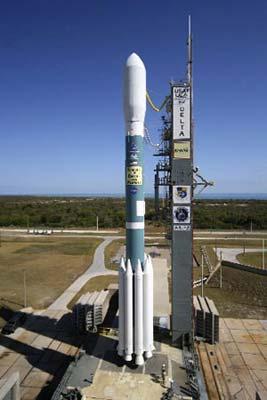"This mission attempts to answer a question that is as old as time itself -- are other planets like ours out there?" said Ed Weiler, associate administrator for NASA's Science Mission Directorate at NASA Headquarters in Washington, before Kepler's liftoff.
 |
| A United Launch Alliance Delta 2 rocket is prepared for the launch of the Kepler Telescope for NASA Kepler, from Pad 17-B at Cape Canaveral Air Force Station in Florida, March 6, 2009. (Xinhua Photo/ Reuters) |
"It's not just a science question -- it's a basic human question," Weiler said.
Using special detectors similar to those used in digital cameras, Kepler will look for slight dimming in the stars as planets pass between the star and Kepler. The Kepler's place in space will allow it to watch the same stars constantly throughout its mission, something observatories like Hubble Space Telescope cannot do.
"We are very excited to see this magnificent spacecraft come tolife when it reaches space," said James Fanson, Kepler project manager at NASA's Jet Propulsion Laboratory, Pasadena, California.
